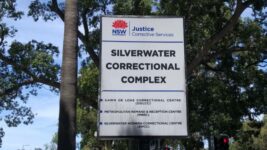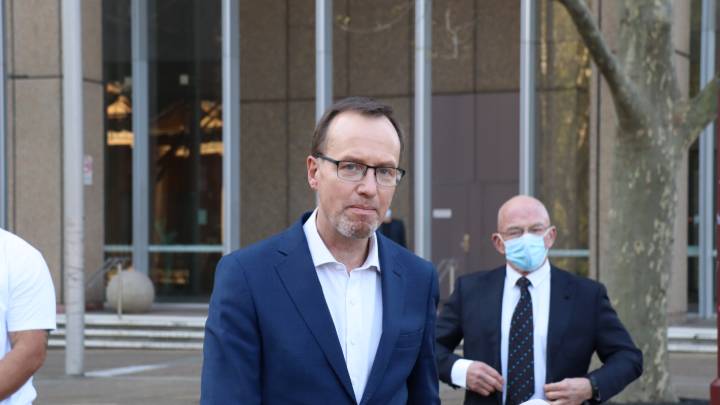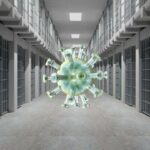Berejiklian Ignores COVID “Ticking Timebomb” in NSW Prisons

At the onset of the pandemic in March 2020, it was widely acknowledged that an outbreak in the NSW prison system would be a humanitarian disaster, as crowded, enclosed facilities with a dearth of healthcare are prime environments to become superspreader sites.
And as COVID-19 can jump closed international borders, the walls of prison pose no issue for the infection to make its way back out into the community.
Department of Communities and Justice secretary Michael Coutts-Trotter told a 1 September budget estimates hearing that 112 inmates were COVID positive, which accounts for close to 1 percent of the entire prison population.
Sixty one of these prisoners were being held at Parklea Correctional Centre, but by 3 September reports put the numbers of infected detainees at that facility at close to 100.
In response to COVID outbreaks at Parklea, Bathurst and Silverwater correctional facilities, the entire NSW prison system was placed in lockdown early last week. And justice advocates have been calling for the release of low-risk prisoners, as well as a stepping up of the vaccine rollout inside.
However, despite the escalating crisis coming to the fore last week, by the weekend reports from inmates and their families suggested that once the focus dropped off, the urgency around vaccinating prisoners subsided and they were being prevented from speaking to the outside world.
Slow drip vaccinations
“We have the government largely in denial waiting for there to be an uncontrollable outbreak before they take any serious remedial action,” NSW Greens MLC David Shoebridge told Sydney Criminal Lawyers.
“Less than a quarter of prisoners are vaccinated, and across the entire system, prison after prison is now in lockdown, with many prisoners spending up to 23 hours a day in their cells,” he continued. “That is not sustainable.”

Justice Health released data last week outlining that only 21 percent of NSW prisoners and 41 percent of prison staff are fully vaccinated. Indeed, as the Guardian confirmed last Friday, despite prison populations being a priority, vaccines slated for inmates were redirected to HSC students.
The COVID cases aren’t confined to inmates either. As of 31 August, seven prison staff members had tested positive to the virus at Bathurst gaol. Yet, despite the Public Service Association calling for further on-site vaccination for its members, NSW Health has rejected the union’s request.
“What I’ve been hearing from inside prisons is that prisoners are being refused vaccinations or they’re being told that access to vaccinations will be months in the future,” Shoebridge said, adding that he’s heard that phone calls to families are also being cut off or refused.
“It appears very clear that the prison authorities don’t want there to be a prisoner voice in the public debate.”
Emergency laws shelved
The Berejiklian government passed a suite of emergency pandemic laws in late March 2020, which included provisions that empower the Corrective Services NSW (CSNSW) commissioner to release certain nonviolent inmates into the community early to alleviate such a situation as is occurring now.
Section 276 of the Crimes (Administration of Sentences) Act 1999 (NSW) contains this COVID-19 specific power to release low-risk inmates who have a pre-existing medical condition or are vulnerable to the virus and are eligible for parole within the next 12 months.
Yet, acting CSNSW commissioner Kevin Corcoran told the Herald last week that he’d been considering the release power and had found that around 1,000 inmates qualified for it, but he surmised that once a full assessment was made that this would be cut back to 200 prisoners.
And as this number that he seems to have pulled out of the air is so low, he posits there would be no real easing of the pressure on the prison system, so those at a greater risk of getting seriously ill and dying from the virus should just stay there.
Meanwhile, the DLA global analysis of prison releases in response to COVID-19 found that in the 53 jurisdictions it considered, more than 475,000 convicted prisoners and remandees were released from correctional facilities between March and July 2020.
Potential to explode
Shoebridge further outlined that prisoners currently being locked in their cells for almost the entire day are receiving no additional support or activities, and this is leading to “a seething sense of discontent, anxiety and fear”.
“In NSW politics, between Labor and the Coalition, often the only political debate about prisons is how to make them more brutal and harsher,” the Greens justice spokesperson said.
“That is not going to deal with the COVID crisis, and it’s prevented there being the kind of political attention needed.”
Currently, the Berejiklian government is full steam ahead on opening up the entire state at the 70 percent adult vaccination rate, despite warnings from health officials. So, it’s obviously rather inconvenient that a burgeoning COVID health crisis is potentially about to explode on the inside.
As Shoebridge points out, if the virus spreads through the 13,000-odd prisoner population within these facilities with no adequate healthcare, then the public health system will be overwhelmed with inmates needing hospitalisation, at the same time as we’re all settling in to living with the virus.
“Plain dangerous” not to act
The danger that the COVID prison crisis could get out of hand, whilst the NSW Liberal Nationals government is well aware that it exists, is very real.
This is the same government that initially implemented a lockdown-light when the COVID-19 Delta variant hit, which permitted the highly contagious strain to spread throughout NSW, into vulnerable First Nations communities, down to the nation’s capital and into Victoria.
But according to Shoebridge, there is a way out of the COVID prison crisis, and it consists of taking two courses of action.
The first is to prioritise and “urgently deliver thousands of vaccines”. He added that it is “a crime that only one in four NSW prisoners are fully vaccinated”.
“In the meantime, there needs to be urgent attention given to the release of nonviolent offenders, especially those nearing the end of their sentence or have significant health concerns,” Shoebridge made certain.
“We need to reduce the overcrowding and remove as many people as possible from what is a ticking timebomb of COVID.”







